Costa Rican Carnett Manor Coffee Bean Story musician Mozart Honey Coffee characteristics
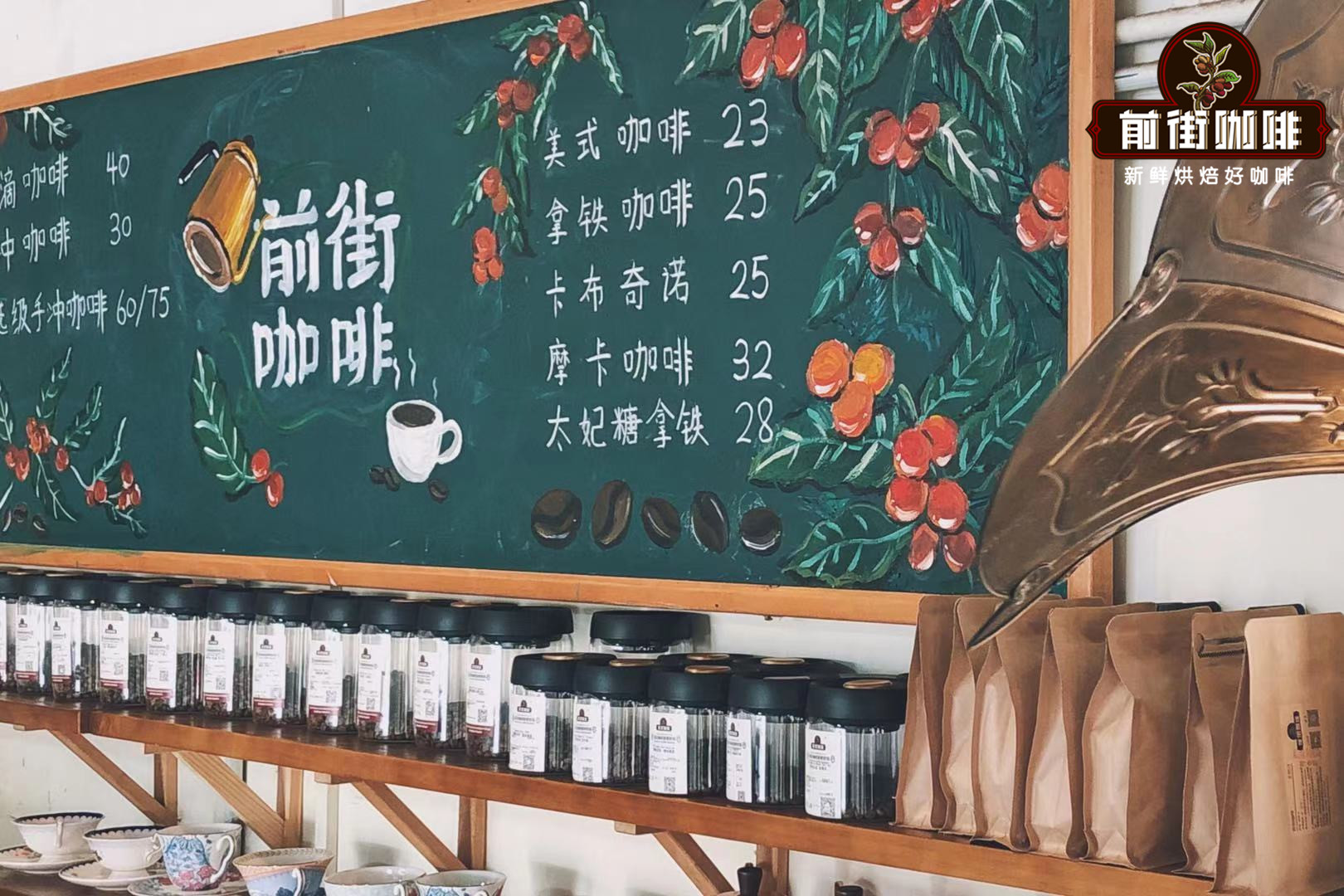
Professional coffee knowledge exchange More coffee bean information Please pay attention to coffee workshop (Weixin Official Accounts cafe_style)
Front Street has tasted many fine coffees. If you want to choose a national coffee flavor represented by sweetness, Costa Rica honey processed coffee beans will definitely be mentioned. Costa Rican coffee is most often treated with honey, but when it comes to this honey word, many friends who do not understand the way coffee beans are treated mistakenly think that honey is added for treatment. In fact, this honey word refers to the pectin of coffee cherries, and honey processing is only a theoretical general term.
History of Costa Rican Coffee
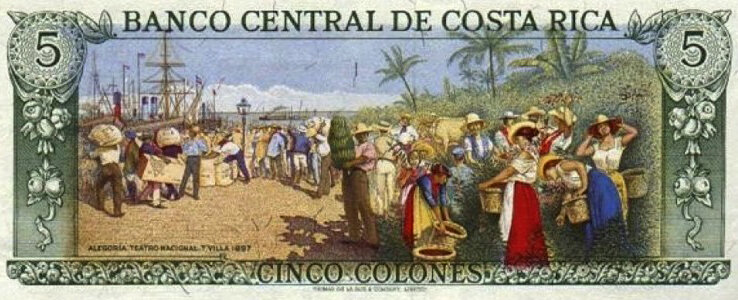
Coffee was introduced to Costa Rica from Cuba in 1729, and Costa Rica became the first country in Central America to grow coffee and the first to grow coffee for commercial value. After Costa Rica gained independence from Spain in 1821, the local government began to support the coffee industry with a series of policies. At that time, coffee was introduced into Costa Rica more than a hundred years later, but coffee trees have been planted about 70,000 trees, showing its development speed. In 1825, the Costa Rican government introduced tax exemption. In 1832, the local government issued a law that "coffee has its own land", meaning that coffee farmers who grow coffee on any vacant land can own that land directly. As soon as this policy came out, it encouraged many people to grow coffee and promote the development of coffee. It is also because of this policy that most Costa Rican coffee now comes from private plantations. Coffee farmers have a high status in Costa Rica. In 1897, the citizens of San Jose witnessed the inauguration of the National Theatre donated by the coffee tycoon. Costa Rica has also amended its laws to specify that only Arabica is allowed to be grown in the country and that Robusta is prohibited in the country.
Costa Rica's growing regions
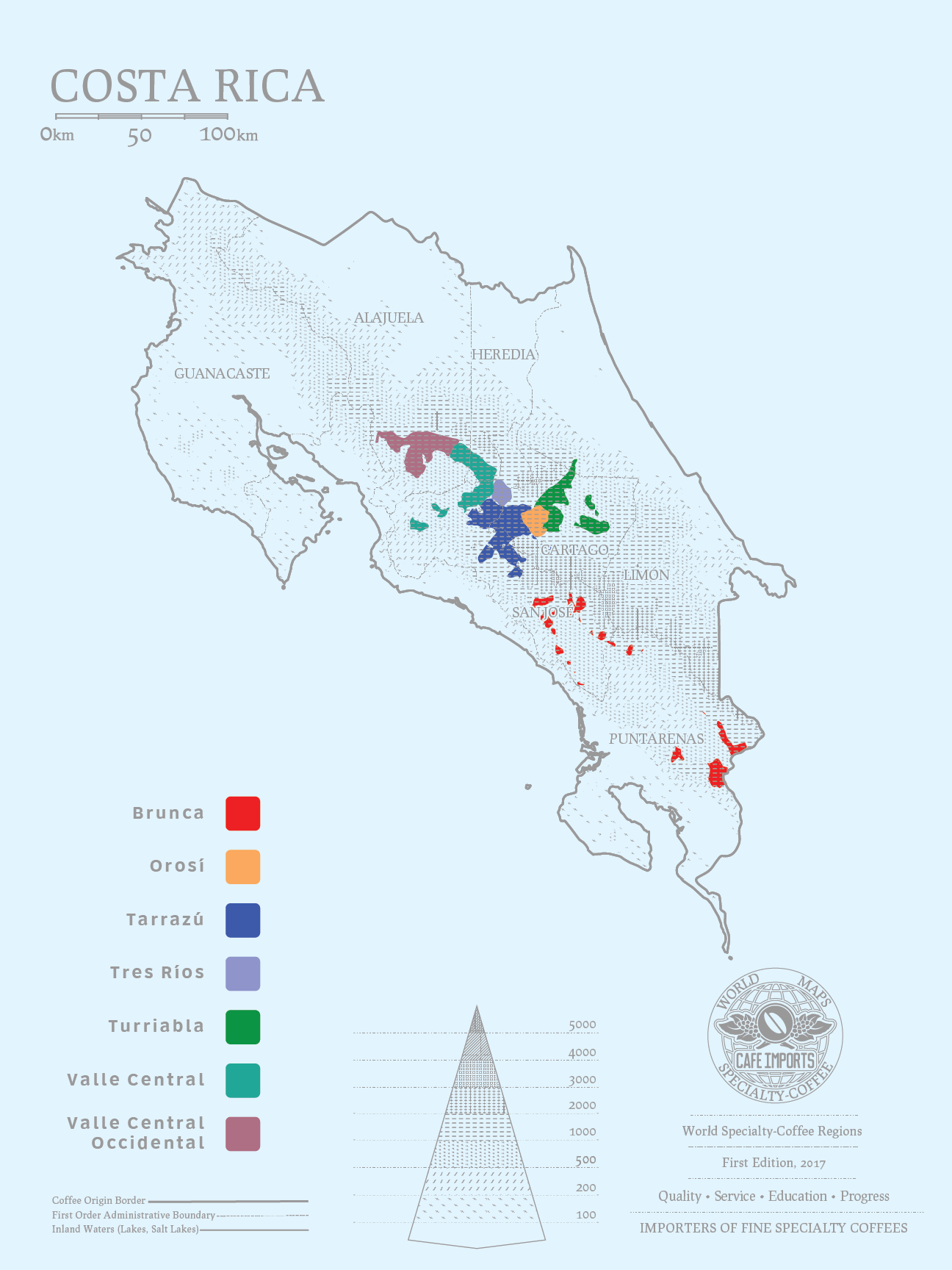
Costa Rica is located in Central America and has a long history of coffee cultivation. Volcanic soil is very fertile, and drainage is good, especially in the Central Plateau, volcanic terrain has fertile volcanic ash, moderate and suitable temperature, stable and abundant rainfall, become an essential factor for planting good coffee.
There are eight main producing areas in the country: Western Valley Central Occidental, Central Valley Central, Tarrazu, Sanshui River Tres Rios, Orosi, Brunca, Turrialba.
Tarazhu production area
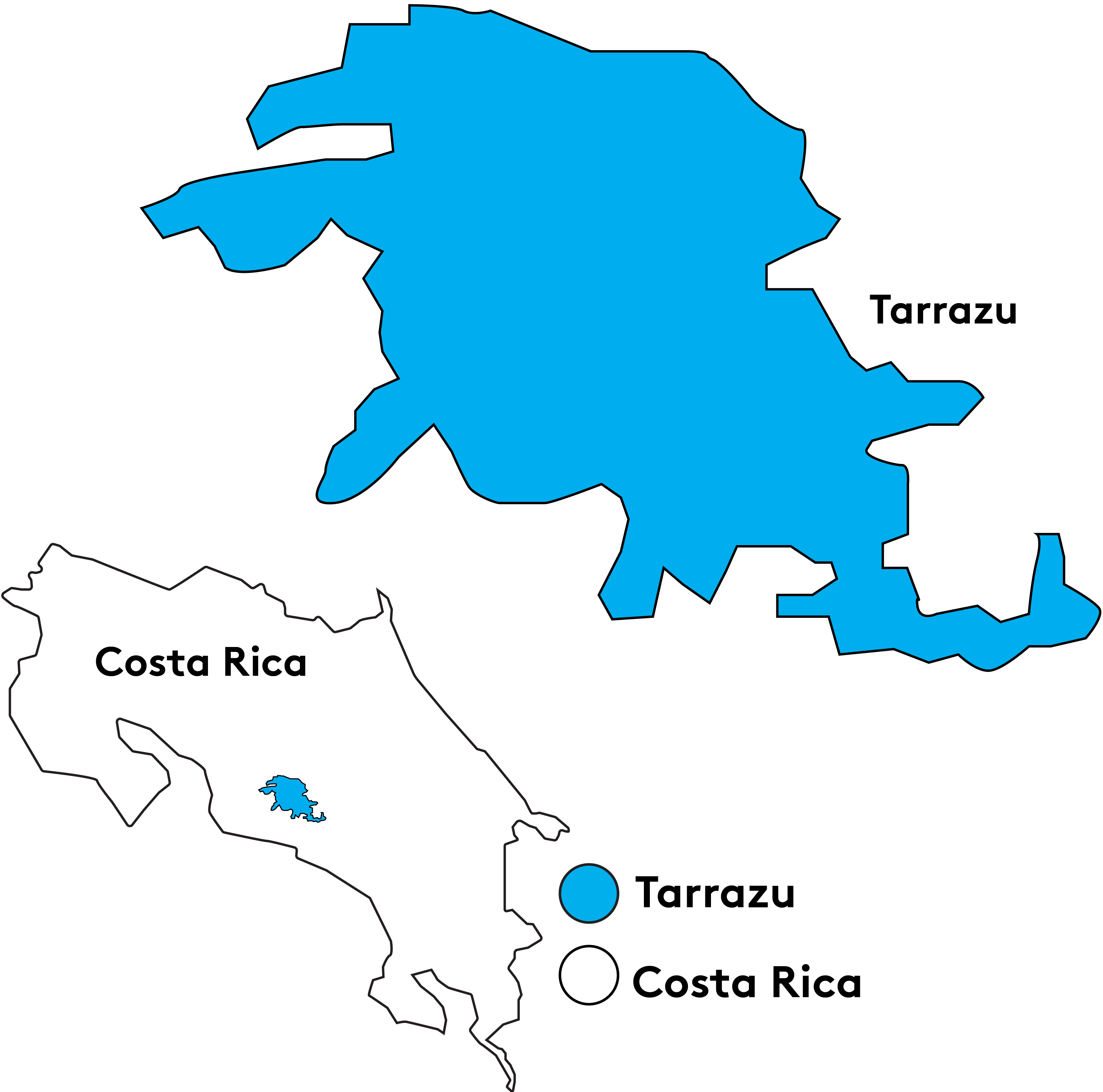
Tarazhu is located in a volcanic area with an altitude of about 2000 meters. It has fertile volcanic ash soil and a cool environment at high altitude. It produces coffee beans with rich flavor, bright and excellent acidity and pure and clear texture. In Tarazhu, the rainy season and dry season are distinct. The rainy season lasts seven months from May to November, which coincides with the growing period of coffee trees, and the dry season lasts five months from December to April of the following year. The harvest time of local coffee cherries is from November to March of the following year, up to 5 months, which coincides with the dry season. This climate with distinct dry and wet seasons has become the ideal conditions for planting and has also achieved coffee cherries with consistent maturity.
Carnet Manor
Finca Canet is a small five-hectare estate located in the town of San Marcos in the Tarazhu region, where the highest concentration of Tarazhu coffee is grown and where Costa Rica's fruit production is concentrated. It is owned by the Robles brothers Leo, Elian and Melvin, who have worked together for more than 10 years in farming and production, and also share a small water treatment plant (Beneficio). They launched the Musican Series, a series of four beans, using different green bean processing techniques to highlight different unique characteristics.
According to Qianjie, the origin of the musician series coffee beans is because the manor owners of Canet Manor love classical music very much, and will also distinguish which coffee beans feel like which musicians according to the flavors produced by different processing methods, thus naming the coffee beans. As mentioned above in Qianjie, Tara beads are the highest altitude producing areas in Costa Rica. Therefore, Canet Manor produces SHB high-altitude extremely hard beans, which are inherently sweet in flavor. Aromas of fruit, wine and tea.

Costa Rican honey treatment
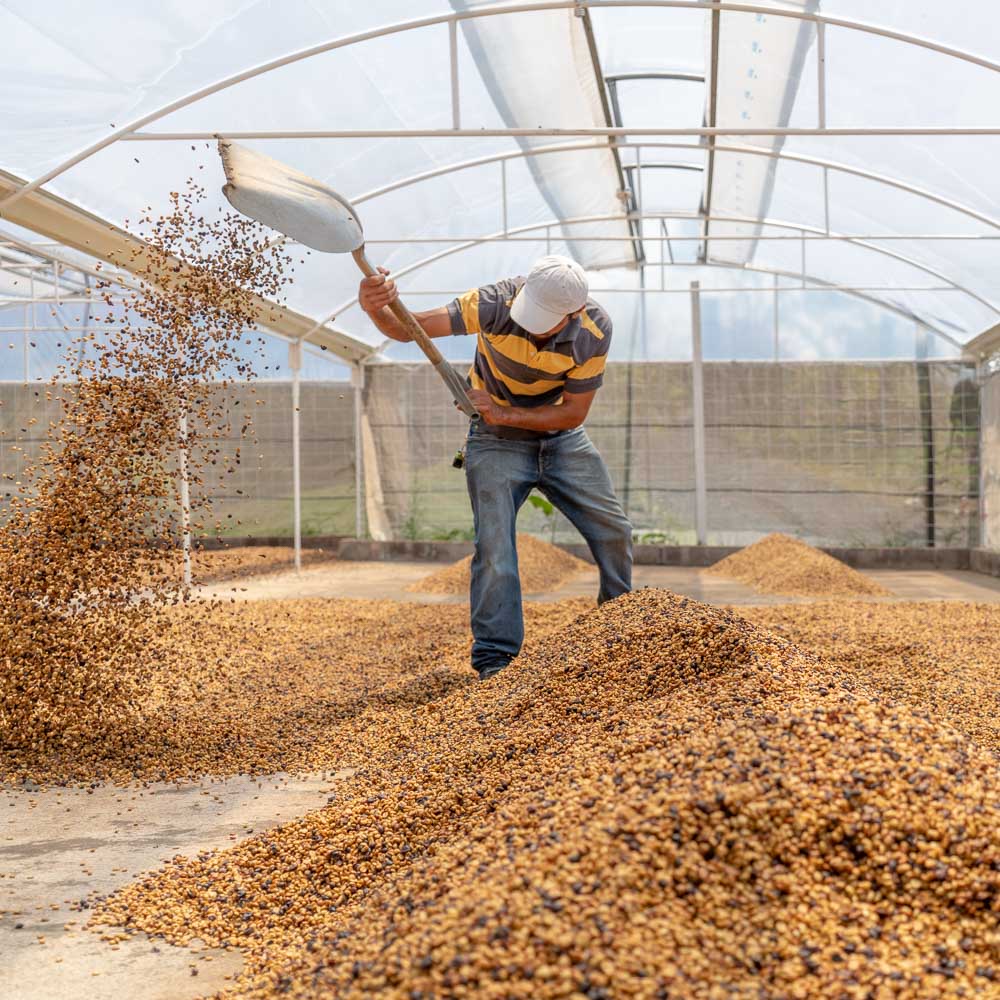
The honey process, known as the Honey Process or Miel Process, is known as Honey Coffee and is used in coffee plantations in Costa Rica, Panama, and Guatemala. Costa Rican honey-treated coffee beans are particularly well known. The so-called honey treatment refers to the process of making raw beans dried in the sun with mucous membranes (also called pectin). After coffee beans have been stripped of their outer pulp, they have a sticky gelatinous layer (pectin). The traditional washing method will wash it with clean water, but because of the water resource limitation of some high-altitude habitats, this direct drying method was born.
The taste difference between honey treatment method and washing treatment method: higher sweetness than washing, higher sugar content, and relatively higher mellow.
Costa Rican honey-treated coffee beans retain the cleanliness of the water treatment, although the brightness of the coffee is reduced, but the sweetness and caramel taste are increased. According to the degree of honey treatment, Costa Rica honey treatment coffee beans are divided into yellow honey treatment, red honey treatment and black honey treatment.

Speaking of which, Front Street would like to highly recommend the Musicians series coffee beans from the Canet estate in Costa Rica's Tara Pearl region. Mozart's music is delicate, implicit, gorgeous, clear style, beautiful melody, and musician series coffee beans have a bean with delicate red berries sweet and sour with implicit flower fragrance, style is both delicate red berries, but also flowery gorgeous, raisin-like fermentation feeling drives this song beautifully presented in the mouth.
Front Street Coffee Costa Rica Mozart
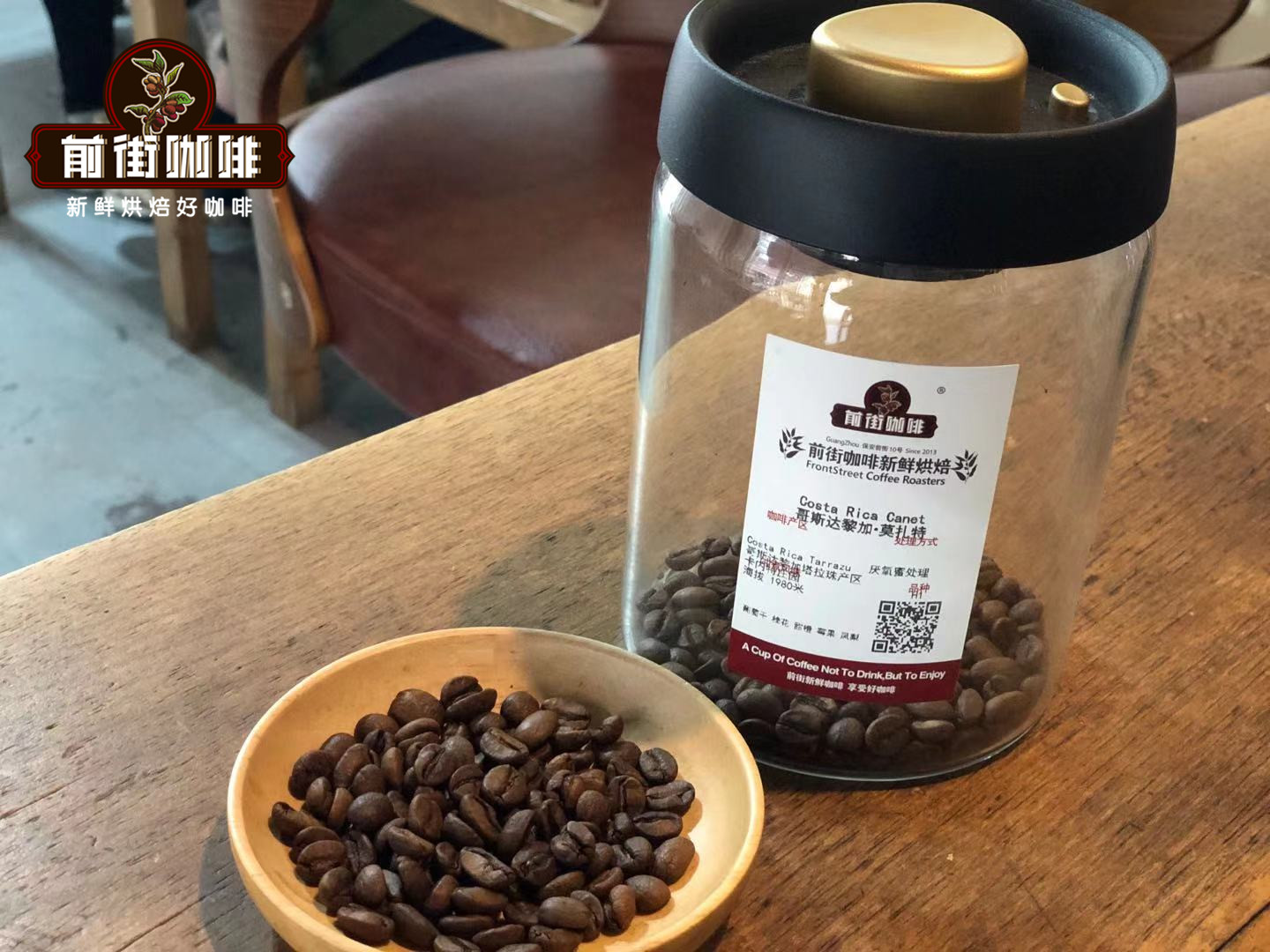
Country: Costa Rica Fiscal year: 2003
Production area: Tara Pearl
Manor: Kanet Manor
Altitude: 1980m
Breed: H1
Treatment: Raisin honey treatment
H1
When you see the H1 variety on the small label on the Mozart package of our front street coffee, some friends may wonder, what is the H1 variety?
H1, full name Centroamericano H1, is the continuation of research in Sebaco Laboratory of Nicaragua. H1 is a hybrid between Lumei Sudan and Satchmo T-5296. Lumei Sudan was found in Lumei Valley of Boma Plateau in Sudan, hence its name.
This coffee is good in quality and flavor, but poor in disease resistance. However, the varieties crossed with it can inherit the genes with good flavor. The H1 variety with stable gene had high productivity, potential high quality, adaptability and resistance to leaf rust, but was susceptible to leaf spot disease.
raisin honey treatment
Raisin honey treatment method is to retain 100% pectin and zero water treatment method. The difficulty of honey processing method is improved, which requires strict control of time. On the day of harvesting coffee cherries, the harvested coffee fruits are poured into a large tank, and the ripe and full fruits will sink to the bottom; the immature or overripe fruits will float to the surface, and these floating beans need to be removed. The sifted coffee cherries are allowed to dry on an elevated bed for at least three days, then the cherry skins are removed and the pectin retained before drying.
Front Street Coffee Brewing Advice
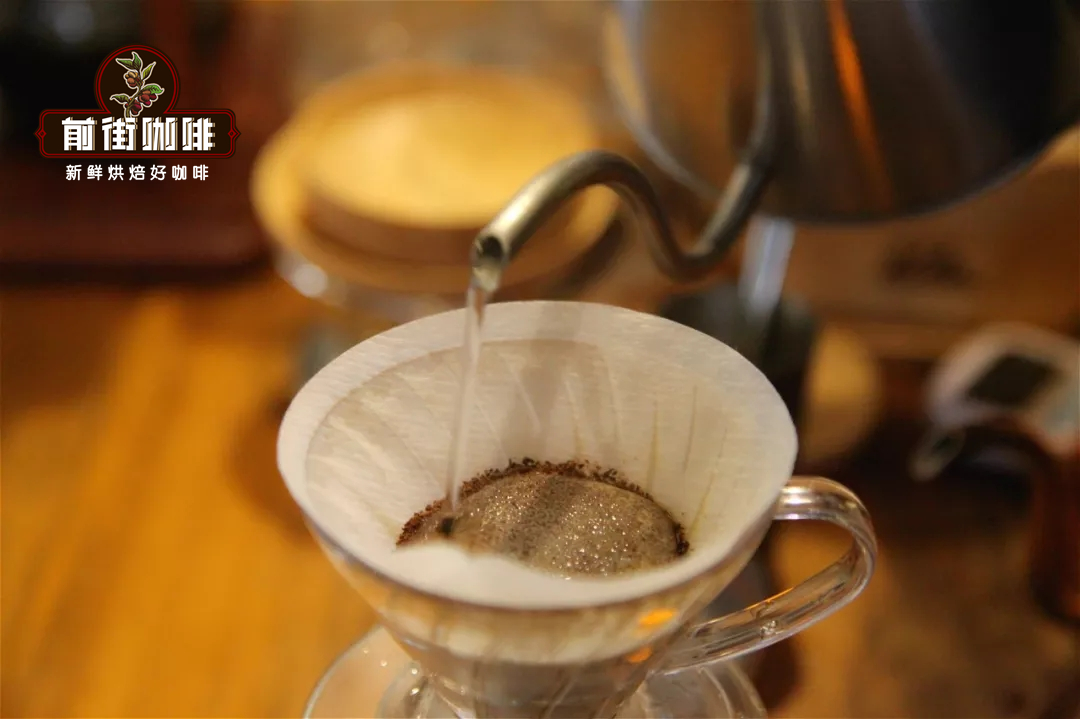
Filter cup: V60#01
Water temperature: 90-91℃
Powder: 15g
Grinding degree: medium and fine grinding (80% pass rate of No.20 sieve in Chinese standard)
Powder water ratio: 1:15
Three-stage extraction: steam with 30g water for 30s, inject water in small circles until 125g, stop injecting water until 225g when water level drops, remove filter cup when water level drops and powder bed is exposed,(steam start timing) extraction time is 2 minutes.
Flavor Description: Wet aroma is osmanthus and fermentation aroma. Complex floral and fermented sauce aromas on the palate, with raisins and dried fruit sweetness, sour notes of carambola and berry, sugar returning to sweetness.
More fine coffee beans, please add private WeChat Qianjie Coffee, WeChat: kaixinguoguo0925
Important Notice :
前街咖啡 FrontStreet Coffee has moved to new addredd:
FrontStreet Coffee Address: 315,Donghua East Road,GuangZhou
Tel:020 38364473
- Prev

Costa Rican Coffee Mozart raisin double Honey treatment Etala Zucanette Manor
For professional baristas, please follow the Coffee Workshop (official Wechat account cafe_style) country: Costa Rica Grade: SHB producing area: Tara Pearl Baking degree: moderate Baking method: grape shift dried, double fermented Honey Variety: yellow Cardouai Manor: Carnett Manor Flavor: sweet and colorful all kinds of fruits, Honey and toffee Costa Rica passes through the honey place.
- Next
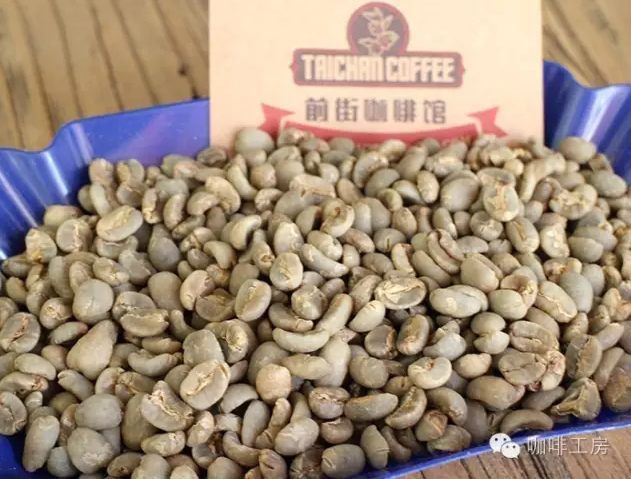
Sumatra wet planing Mantenin brings good flavor!
Sumatran wet planing is the annual harvest season for manning in Sumatra from March to May and September to December, and now most coffee farmers only harvest all-red coffee cherries. After collecting coffee cherries in the morning, coffee cherries will be peeled and peeled in the afternoon. Sumatra has a superior natural environment, and most of the water used will be mountain spring water. 1. The coffee fruit is peeled and will take shell beans.
Related
- Detailed explanation of Jadeite planting Land in Panamanian Jadeite Manor introduction to the grading system of Jadeite competitive bidding, Red bid, Green bid and Rose Summer
- Story of Coffee planting in Brenka region of Costa Rica Stonehenge Manor anaerobic heavy honey treatment of flavor mouth
- What's on the barrel of Blue Mountain Coffee beans?
- Can American coffee also pull flowers? How to use hot American style to pull out a good-looking pattern?
- Can you make a cold extract with coffee beans? What is the right proportion for cold-extracted coffee formula?
- Indonesian PWN Gold Mandrine Coffee Origin Features Flavor How to Chong? Mandolin coffee is American.
- A brief introduction to the flavor characteristics of Brazilian yellow bourbon coffee beans
- What is the effect of different water quality on the flavor of cold-extracted coffee? What kind of water is best for brewing coffee?
- Why do you think of Rose Summer whenever you mention Panamanian coffee?
- Introduction to the characteristics of authentic blue mountain coffee bean producing areas? What is the CIB Coffee Authority in Jamaica?

